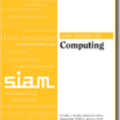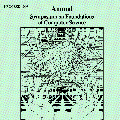We show how to obfuscate pseudo-deterministic quantum circuits, assuming the quantum hardness of learning with errors (QLWE) and post-quantum virtual black-box (VBB) obfuscation for classical circuits. Given the classical description of a quantum circuit $Q$, our obfuscator outputs a quantum state $\ket{\widetilde{Q}}$ that can be used to evaluate $Q$ repeatedly on arbitrary inputs. Instantiating the VBB obfuscator for classical circuits with any candidate post-quantum indistinguishability obfuscator gives us the first candidate construction of indistinguishability obfuscation for all polynomial-size pseudo-deterministic quantum circuits. In particular, our scheme is the first candidate obfuscator for a class of circuits that is powerful enough to implement Shor's algorithm (SICOMP 1997). Our approach follows Bartusek and Malavolta (ITCS 2022), who obfuscate \emph{null} quantum circuits by obfuscating the verifier of an appropriate classical verification of quantum computation (CVQC) scheme. We go beyond null circuits by constructing a publicly-verifiable CVQC scheme for quantum \emph{partitioning} circuits, which can be used to verify the evaluation procedure of Mahadev's quantum fully-homomorphic encryption scheme (FOCS 2018). We achieve this by upgrading the one-time secure scheme of Bartusek (TCC 2021) to a fully reusable scheme, via a publicly-decodable \emph{Pauli functional commitment}, which we formally define and construct in this work. This commitment scheme, which satisfies a notion of binding against committers that can access the receiver's standard and Hadamard basis decoding functionalities, is constructed by building on techniques of Amos, Georgiou, Kiayias, and Zhandry (STOC 2020) introduced in the context of equivocal but collision-resistant hash functions.
翻译:我们展示了如何模糊假的确定性量子电路, 假设以错误( QLWE) 和后夸脱式虚拟黑盒( VBB) 为古典电路的学习量的硬度( QLWE) 和后夸脱式虚拟黑盒( VBB) 的模糊性。 鉴于量子电路的古典描述 $Q 美元, 我们的模糊性计算器生成了一个量子状态 $ ket- 宽度 ⁇ ( QQQP), 用来对任意输入的量子电路进行反复评估。 我们的方法遵循了古典电路的 VBB 模糊性电路( ITS 2022 ), 用来对直径电路进行不易变异性读性读性读性读性( QC) 直路路路机的解析算法, 用来对直径直径直径直径电路路路机进行完全的解算法( IM) 和直径直径直径直径直径解( C) 直径直径直径直径解( 解的解的平路的算法解程序, 直径直径解, 直径直径解, 直径解的算法( 直路的直路的算法是用来对直径直径直路的直路机的解, 直路路路路路路路路路路路路路路路路路路路路路路路路路路进行,我们算法, 直路路算法, 直路路路路算法,我们算法), 直路路路路路路路路路路路路路路的算法, 直, 直, 直算算法, 直, 直, 直) 直, 直, 直,我们算法, 直路路路路路路路路路路路路路路算法, 直, 直, 直, 直路路算算算算算算算算算法, 直算法,可以算算法, 直, 直算算算算算算算算算算算算算算算算法, 直路算算算算算算算算





